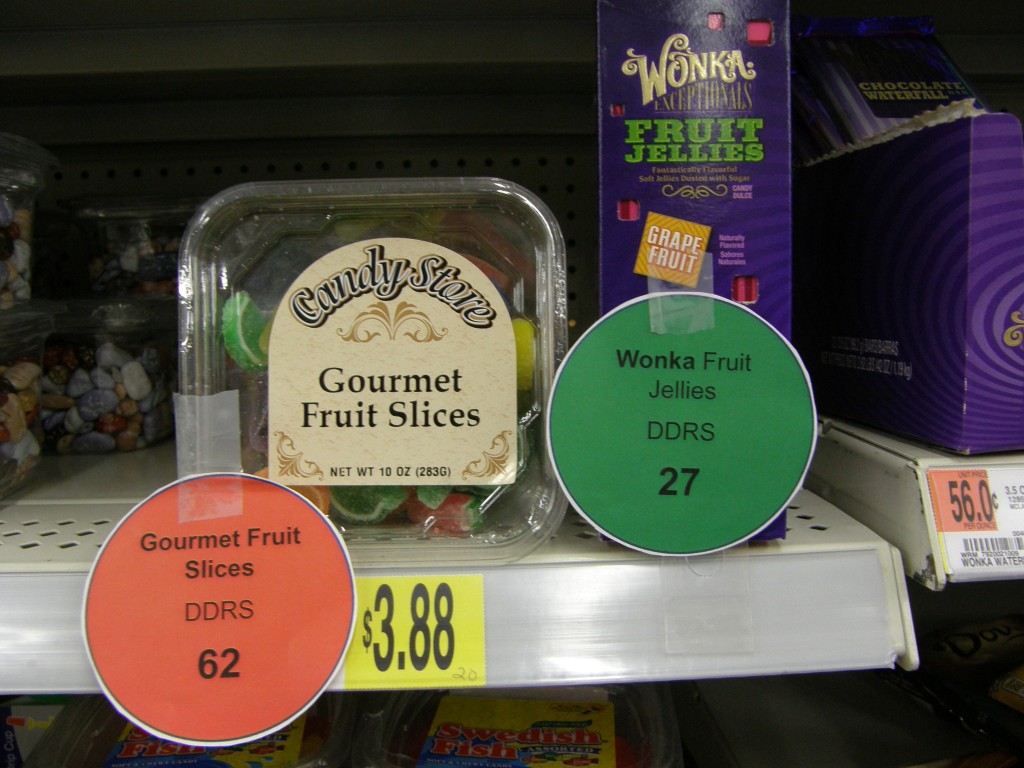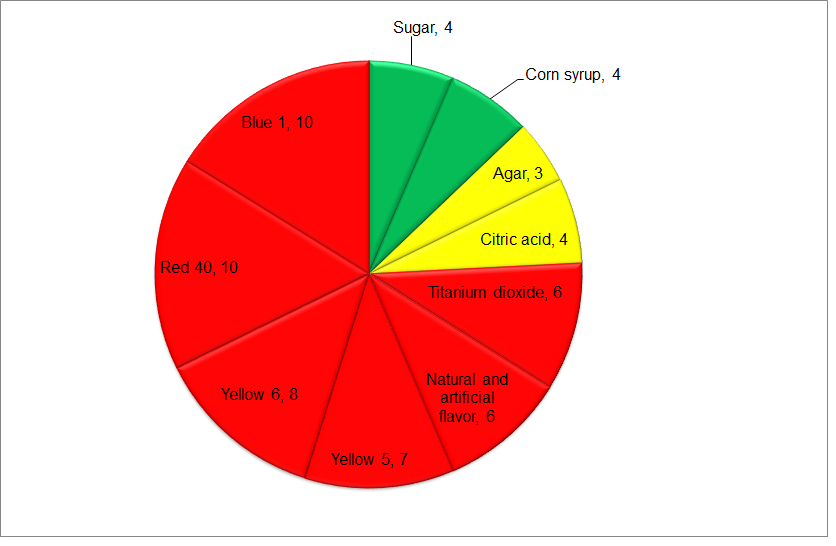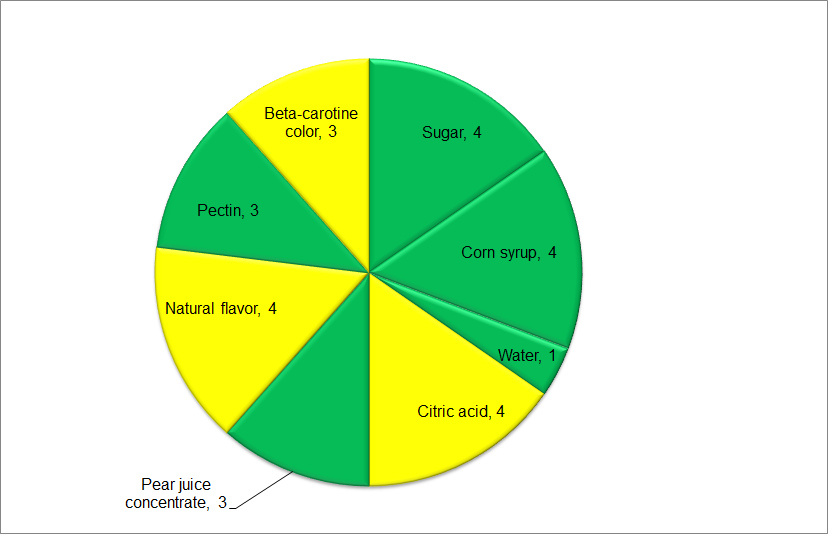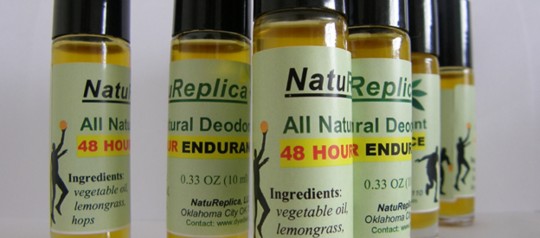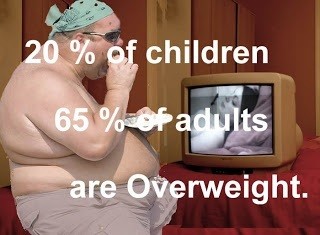Candy Health Risks
Fruit Candy
Do our children take health risks when they eat candies loaded with food additives and food dyes? Unfortunately, yes. Candy is a special topic because they are designed first and foremost to catch attention of our children so that they encourage us into a buying spree. The food manufacturer’s equation for success looks like this: candy food coloring + children + parents = increased sales. When I see shelves filled with the fluorescent-bright sweets I bitterly think of the kids who eat them. Unlike us, parents, food manufacturers see our children as a market: Children and youth represent an important demographic market because they are potential customers, they influence purchases made by parents and households, and they constitute the future adult market (McNeal, 1998; Moore et al., 2002 – quotation from a report “Food Marketing to Children and Youth: Threat or Opportunity?” released for the Congress on December 6, 2005 which you can read in full here. Committee on Food Marketing and the Diets of Children and Youths concluded that “Food and beverage marketing practices geared to children and youth are out of balance with healthful diets, and contribute to an environment that puts their health at risk” (see also Food marketing to children and youth overview). Exactly so! Please also read Center for Science in the Public Interest report on the effect of food dyes and other foreign additives on the children’s behavior (Diet_ADHD and Behavior).
I wish all foods were labeled with the appropriate health risk labels like on the picture below.
Let us take a look at Gourmet Fruit Slices to find out what exactly they want us to treat our children to. Ready?
Fruit Slices Risk Diagram, DDRS ~ 62
Most of the health risk comes from 6 foreign additives contributing with 47 units. Only 2 nutritional and 2 benign additives add another 15 units. Note, no real fruit or fruit juices reside in this candy, only sugar and 5 colorants and flavor. Poor nutritional value, poor children…
Let me introduce here another parameter:
DyeDiet FOREIGN Impact (DDFI)
DDFI simply is a ratio of the sum of all foreign DyeDiet Risk Factors (DDRF, all red segments) to the sum of all nutritional DDRFs (all green segments). For the above diagram DDFI is 47/8 ~ 5.9. The Foreign Impact is ZERO only when there are absolutely NO foreign additives in a product, and, at its upper limit, DDFI can be as high as ~50 if someone chooses drinking water full of many foreign additives, which is unlikely to occur, I hope. So, in real life, for the most of foods we eat, DDFI will vary within the range of 0 to 15. The DDFI value indicates how big health risk comes from FOREIGN additives RELATIVE to NUTRIENTS in a food product. Thus, the higher DDFI the greater is overall health risk and the lower is nutritional value of the food. In even simpler terms, DDFI above 1 means “bad”; DDFI below 1 means “good” and DDFI = 0 means “best” food.
Now let us turn to an alternative, Wonka Fruit Jellies below.
Wonka Fruit Jellies Risk Diagram, DDRS ~ 27
No foreign additives are added to this product, no red segments on the diagram, hence its DDFI = 0. The low risk comes from 3 benign and 5 nutritional additives, including real pear juice concentrate.
As you can see, with Wonka Fruit Jellies your children get less than half of the risks that come with the “Fruit” Slices and ZERO foreign additive risk impact (remember, DDFI = 0 is best!). Calories, carbohydrates content and prices of the two are very close. Check it out:
Fruit Slices vs Fruit Jellies comparison chart
| Additives and Nutrients | Candy Store Gourmet Fruit Slices | Wonka Exceptionals Fruit Jellies |
| Colors added | Yellow 5, Yellow 6, Red 40 and Blue 1 | Beta-carotene |
| Calories per 6 OZ (42 g) | 140 | 130 |
| Carbohydrates, weight % | 81 | 81 |
| Walmart price per 5 OZ | $1.94 (a | $2.37 |
| DyeDiet Risk Score (DDRS) |
62 |
27 |
| DyeDiet Foreign Impact (DDFI) |
47/8 = 5.9 |
0 |
| Recommendation |
NO |
Yes |
a) Recalculated from the original price of $3.88 for 10 OZ.
Honestly, I cannot imagine why I would buy pieces of sugar heavily contaminated with azo-dyes to treat them to my lovely children? After all, pure sugar is less risky and more of a nutritional ingredient than the one degraded with chemical hazards! The DyeDiet report is here to help you to make your informed decision on which sweets to treat to YOUR sweeties. Good luck!
Category: Candy

